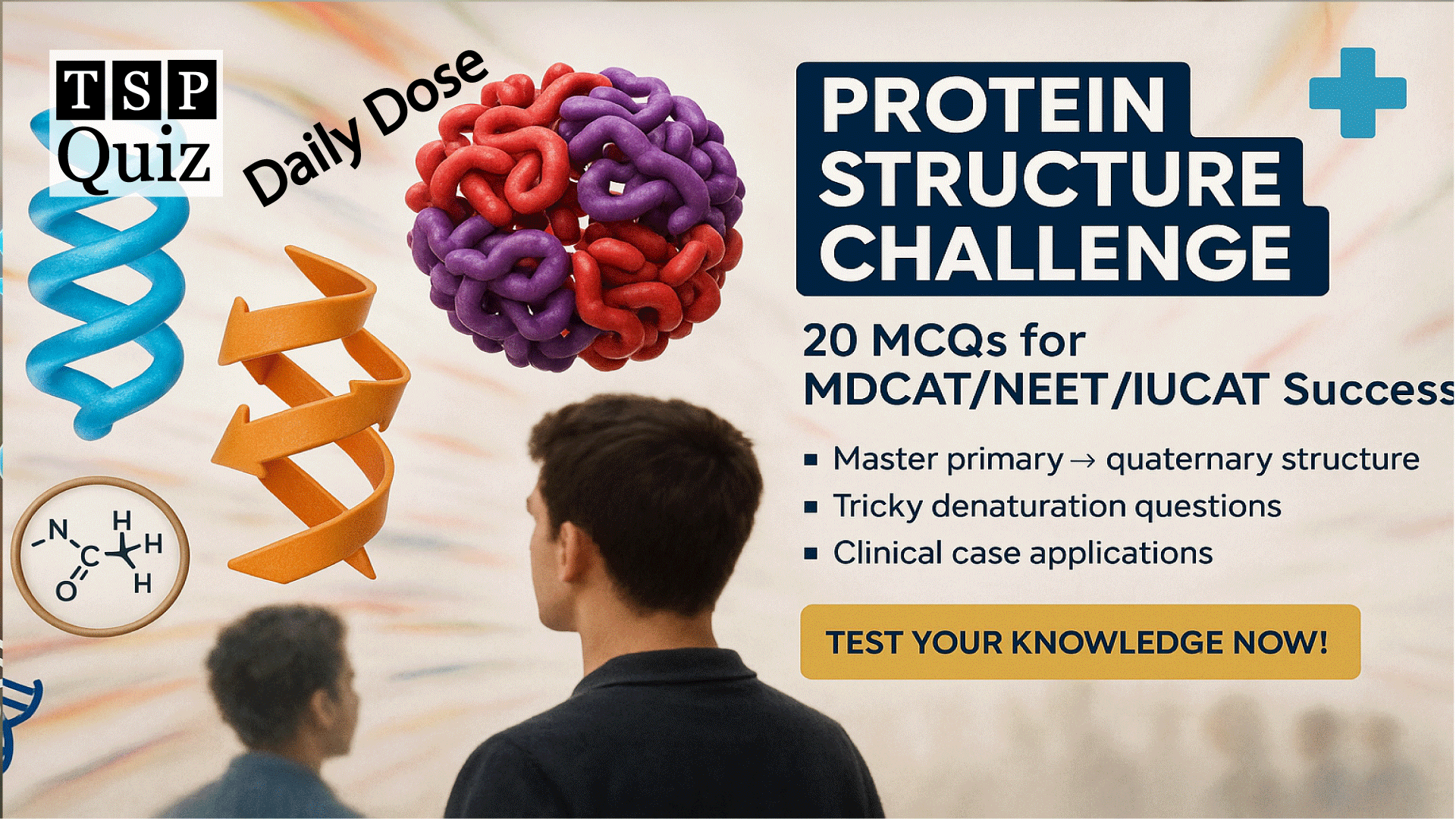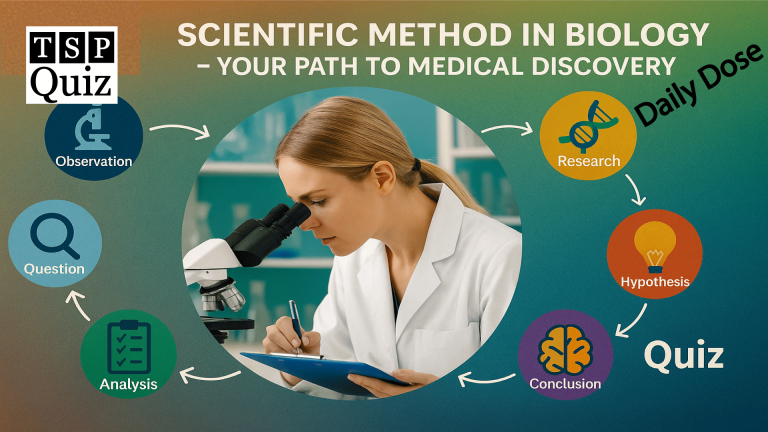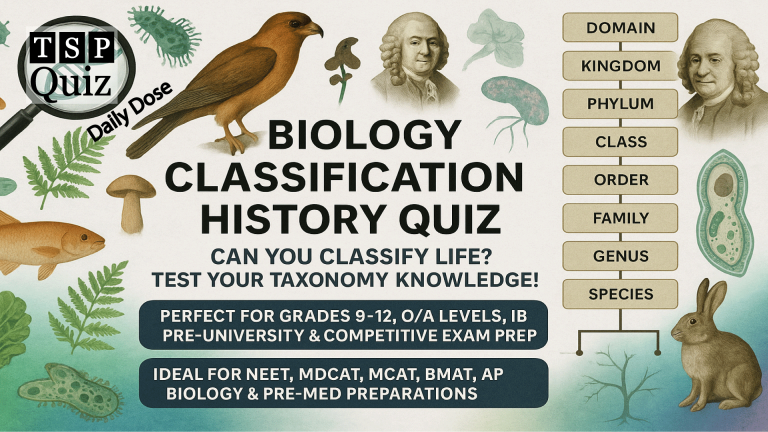Structure of Proteins Quiz – Medical Prep
Test your understanding with the following quiz on Structure of ProteinsQuiz – Medical Prep, and explore more practice questions by following the link for further quizzes.
FAQs – Surprising Facts About the Structure of Proteins
Is protein folding assisted by other proteins inside the cell?
Definitely. Proteins called molecular chaperones (like Hsp70 and chaperonins) help newly synthesized polypeptides fold correctly. For example, GroEL-GroES in bacteria acts like a folding chamber. These helpers prevent misfolding and aggregation — but they are not part of the final structure, which surprises many students.
Why does proline disrupt alpha-helices in proteins?
Proline has a unique cyclic structure that bends the polypeptide chain and lacks a hydrogen atom needed for hydrogen bonding in α-helices. Because of this, it’s often called a “helix breaker.” Proline is frequently found in turns or loops of proteins, like in collagen’s triple helix — where its rigidity is actually beneficial.
Can protein structure be reversed after denaturation?
Sometimes — but not always. Mild denaturation (e.g., heat or pH changes) may allow proteins to refold. A classic experiment by Christian Anfinsen showed that ribonuclease A could regain function after denaturation, proving that structure depends on sequence. However, in real-life conditions, most proteins lose function permanently.
What actually drives protein folding inside a cell?
A major force is the hydrophobic effect. Water-hating (nonpolar) amino acids cluster inside the protein, while polar ones face outwards. This creates a stable 3D structure. It’s like oil droplets in water. Additionally, hydrogen bonds, ionic interactions, and van der Waals forces help fine-tune the shape.
Which protein structure level is directly coded by DNA?
Only the primary structure — the linear sequence of amino acids — is determined by the gene’s DNA. However, this sequence dictates how the protein folds into its secondary (e.g., α-helices, β-sheets), tertiary (3D shape), and quaternary (multi-chain assembly) structures. It’s like spelling: the sequence determines the final word.







